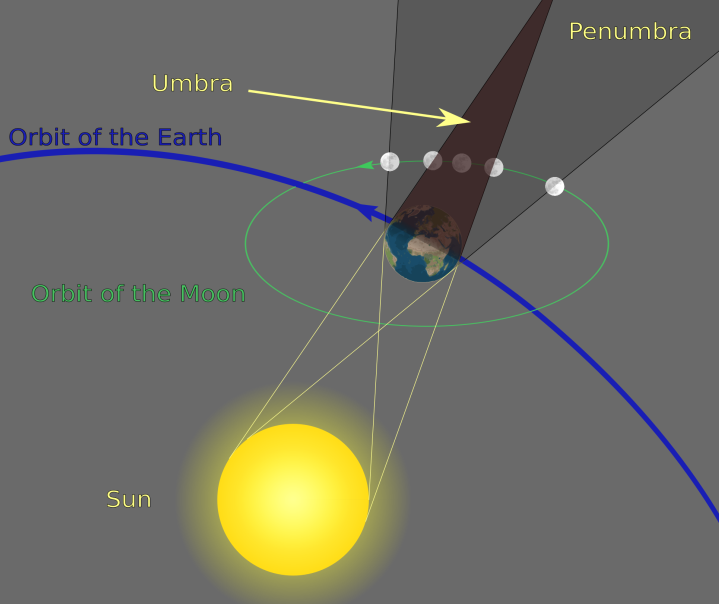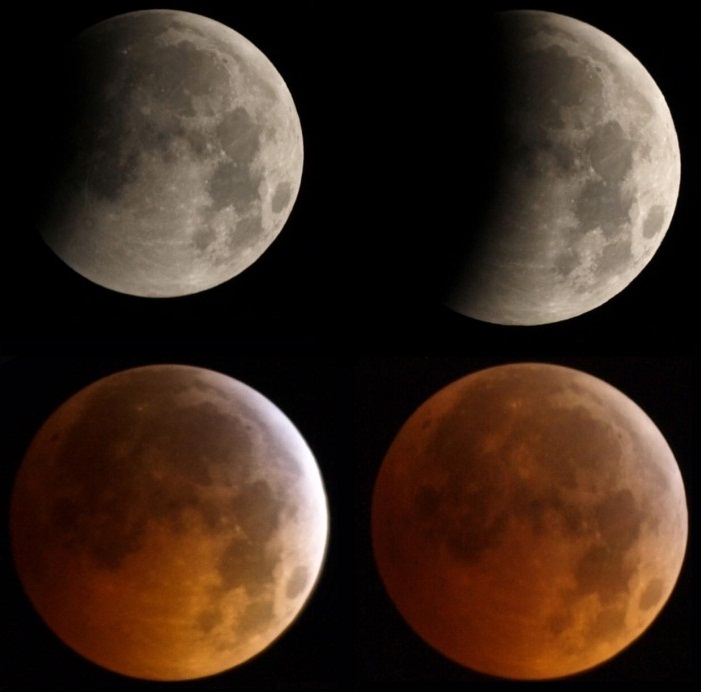Lunar Eclipses
Click here to download or print this factsheet as a PDF
Lunar Eclipses
A Lunar Eclipse occurs when the Earth passes between the Sun and the Moon, meaning that the Moon is in the Earth’s shadow. These can cause the Moon to go red, and are easy to observe with the naked eye.


Lunar Eclipses occur at a full Moon, when the Moon is on the opposite side of the Earth to the Sun. However, Lunar Eclipses do not occur every month because the Moon’s orbit is tilted 5.16° relative to the orbit of the Earth, meaning that most of the time, the Earth’s shadow passes over or under the Moon.
Lunar Eclipses happen more regularly than Solar Eclipses as the Earth’s shadow is larger than the Moon’s, so the Moon passes through it more. Furthermore, a Lunar Eclipse is visible from anywhere in the world at which the moon is above the horizon during the eclipse, so they are visible from the UK every few years.
Types of Lunar Eclipse
A Penumbral Lunar Eclipse is when the Moon passes through the Earth’s penumbra (the lighter outer part of the Earth’s shadow), causing a subtle darkening of the Moon that can be very difficult to see.
A Partial Lunar Eclipse is when only part of the Moon enters the Earth’s umbra (the dark central part of the Earth’s shadow).
A Total Lunar Eclipse is when the entire Moon enters the Earth’s umbra, during which the full Moon becomes very dark and may appear red due to the refractive effects of the Earth’s atmosphere. The Moon takes up to four hours to completely pass through the umbra, meaning that Total Lunar Eclipses generally last a long time.
During a Total Lunar Eclipse the Moon may appear to become red, due to the Earth’s atmosphere refracting (bending) sunlight into the umbra. The Earth’s atmosphere scatters blue light, meaning that it is only the red light that illuminates the eclipsed moon. This is the same reason that sunsets and sunrises appear red and the sky is blue.
The UK’s next Penumbral Lunar Eclipse will be on the night of 18 October 2013, with the Moon reaching its darkest around midnight. The next Total Lunar Eclipse will be early in the morning of 28 September 2015.
Oliver King & H.C.O
Weblinks
General eclipse information and dates of Lunar Eclipses: eclipse.gsfc.nasa.gov/lunar.html
Illustrations from www.wikipedia.org; GFDL
